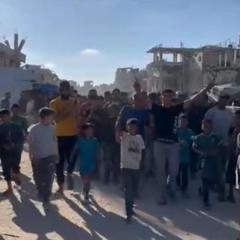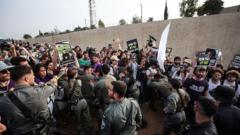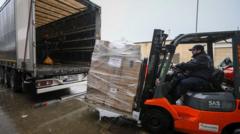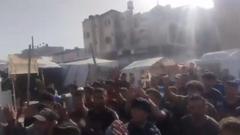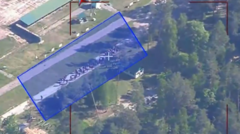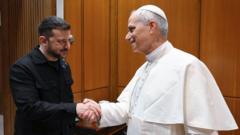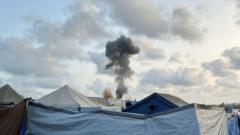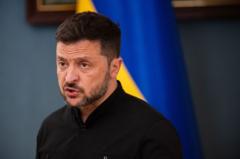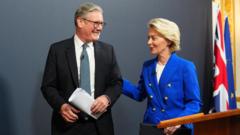President Putin's much-publicized visit to Kursk highlights efforts to address civilian hardships amidst ongoing conflict.
Putin's Visit to Kursk Marks New Chapter in Ukraine Conflict

Putin's Visit to Kursk Marks New Chapter in Ukraine Conflict
Russian leader aims to project normalcy as tensions remain high in Kursk following recent hostilities.
In a significant move signaling ongoing tensions, Russian President Vladimir V. Putin traveled to the Kursk region for the first time since Ukrainian forces conducted a surprise incursion last year. The visit included a tour of a nuclear power plant under construction, reflecting the Kremlin's attempts to foster a sense of normalcy despite persistent combat in parts of the region.
On May 20, Putin met with volunteers aiding those affected by the war, as state media published images of his visit, aiming to reassure the public following heavy fighting that had taken a toll on civilians. Ukraine initially seized about 500 square miles of Russian territory in Kursk during its August offensive, but these gains were gradually eroded as Russian forces strengthened their positions.
With support from North Korean troops, Russia launched a counteroffensive in March that has largely reclaimed regions lost to Ukrainian control. Notably, Kyiv had hoped that maintaining a foothold in Kursk would bolster its negotiating position in potential peace talks, especially given Mr. Putin's earlier stance of unwillingness to discuss terms until Ukraine fully surrenders its positions.
Putin’s trip comes shortly after the first peace talks between Russian and Ukrainian officials in over three years, underscoring potential shifts in dialogue. Reports indicate that nearly 300 Russian civilians have died in Kursk, with over 110,000 displaced due to the fighting, contradicting the Kremlin’s portrayal of the conflict as a distant “special military operation.”
As civilian suffering intensifies, many displaced residents express dissatisfaction with government support, pointing to a disconnect between leadership and the realities on the ground. In response to these grievances, Putin promised financial assistance to residents in border areas, committing to $800 monthly stipends during his remarks to local authorities.
Anatoly Kurmanaev reports on the complexities of Russia's situation and its evolving landscape following the Ukraine invasion.
On May 20, Putin met with volunteers aiding those affected by the war, as state media published images of his visit, aiming to reassure the public following heavy fighting that had taken a toll on civilians. Ukraine initially seized about 500 square miles of Russian territory in Kursk during its August offensive, but these gains were gradually eroded as Russian forces strengthened their positions.
With support from North Korean troops, Russia launched a counteroffensive in March that has largely reclaimed regions lost to Ukrainian control. Notably, Kyiv had hoped that maintaining a foothold in Kursk would bolster its negotiating position in potential peace talks, especially given Mr. Putin's earlier stance of unwillingness to discuss terms until Ukraine fully surrenders its positions.
Putin’s trip comes shortly after the first peace talks between Russian and Ukrainian officials in over three years, underscoring potential shifts in dialogue. Reports indicate that nearly 300 Russian civilians have died in Kursk, with over 110,000 displaced due to the fighting, contradicting the Kremlin’s portrayal of the conflict as a distant “special military operation.”
As civilian suffering intensifies, many displaced residents express dissatisfaction with government support, pointing to a disconnect between leadership and the realities on the ground. In response to these grievances, Putin promised financial assistance to residents in border areas, committing to $800 monthly stipends during his remarks to local authorities.
Anatoly Kurmanaev reports on the complexities of Russia's situation and its evolving landscape following the Ukraine invasion.

